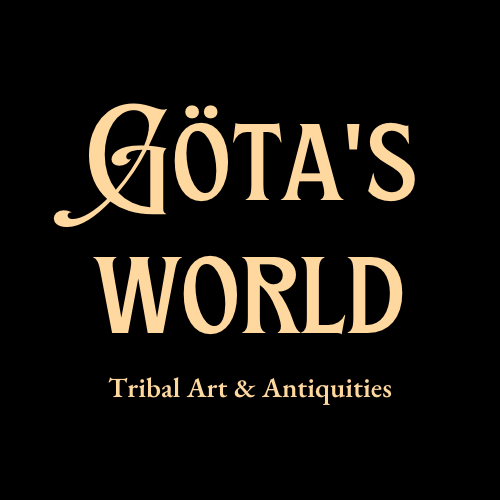Qing Dynasty Wooden Temple Figure of a Taoist God of Wealth Caishen
Qing Dynasty Wooden Temple Figure of a Taoist God of Wealth Caishen
Couldn't load pickup availability
Qing dynasty, 18th century or earlier, Yunnan, China.
This charming and aged temple figure depicts Caishen, the revered Chinese god of wealth and prosperity. Carved from a single block of hard wood, the piece exudes a sense of affluence and benevolence, enhanced by its finely detailed craftsmanship and vibrant lacquer finish.
The corpulent deity is seated in dhyanasana, dressed in flowing robes adorned with intricate details, and crowned with an elaborate headdress. The deep vermillion lacquer, highlighted with black accents and gilding, embodies the Chinese cultural symbolism of happiness and wealth. His rounded face, characteristic of early Ming to Qing aesthetics, features a serene expression with downcast eyes, a prominent nose, full lips, and elongated earlobes, signifying holiness and wisdom. Caishen (Cái Shén), also known by names such as Cai Boxing Jun, is a prominent figure in Chinese folk religion, Taoism, and some Buddhist traditions. His name translates to "God of Wealth," combining the characters for money (cái) and god (shén). Often associated with blessings of prosperity, Caishen is worshipped by those seeking good fortune in life and business.
Figures like this one were central to Chinese religious practices, serving as house gods or temple icons. Many such figures included a concealed cavity in the back, sealed with a wooden lid, containing offerings such as rice, herbs, textiles, or written prayers—believed to imbue the statue with life and divine presence. Dating to the Ming or early Qing dynasty, this figure represents a powerful cultural and spiritual legacy. A timeless artifact, it reflects the artistry and devotion of traditional Chinese craftsmanship, making it an extraordinary addition for collectors and admirers of East Asian art.
Moderate condition. Age-related heavy wear, fractures and chips. Remains of gilding, with loss and flaking to the lacquer, revealing the gesso and wood. Encrusted dark patina. Size approx. 16,3cm x 10,3cm x 7,8cm.
Provenance: Swedish private collection
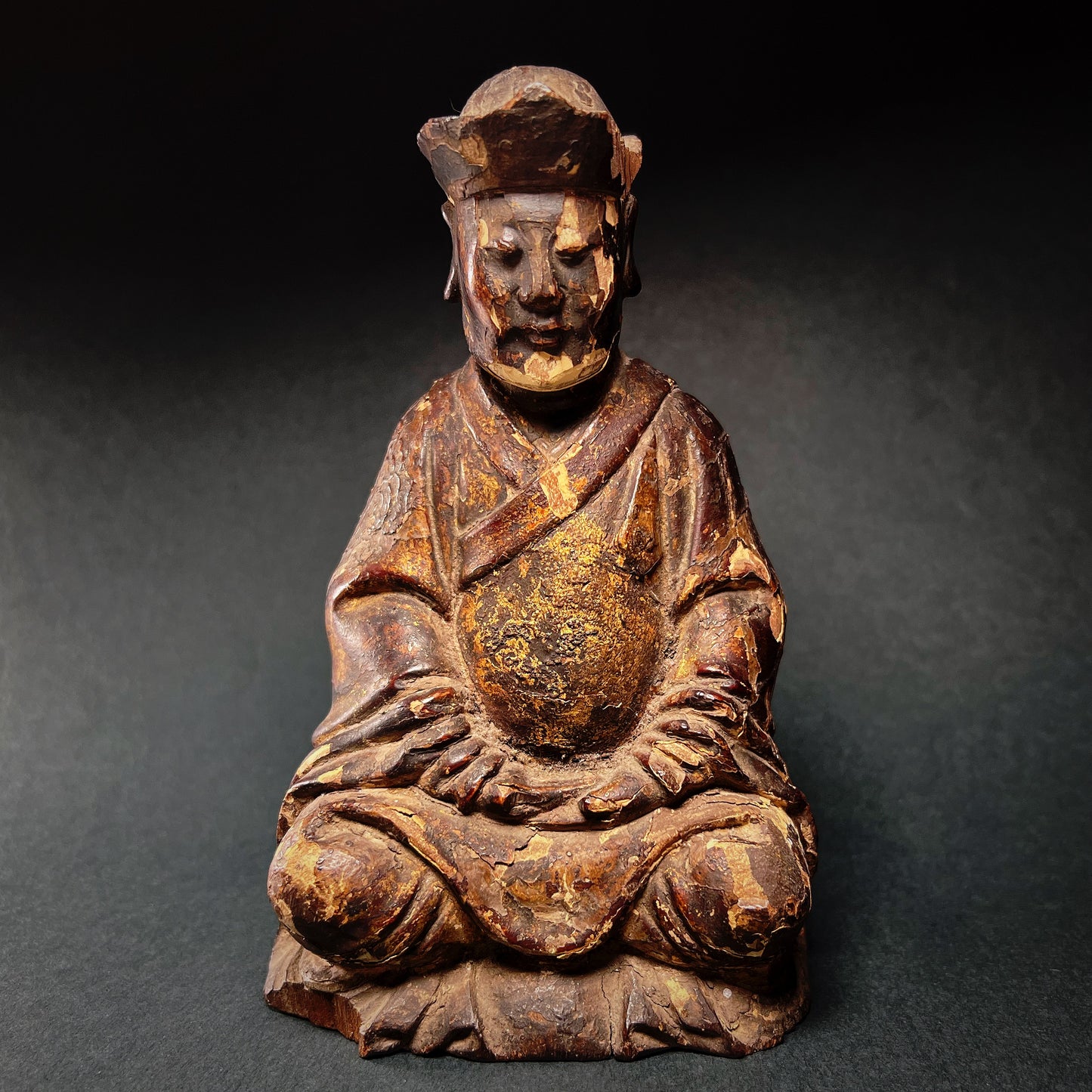
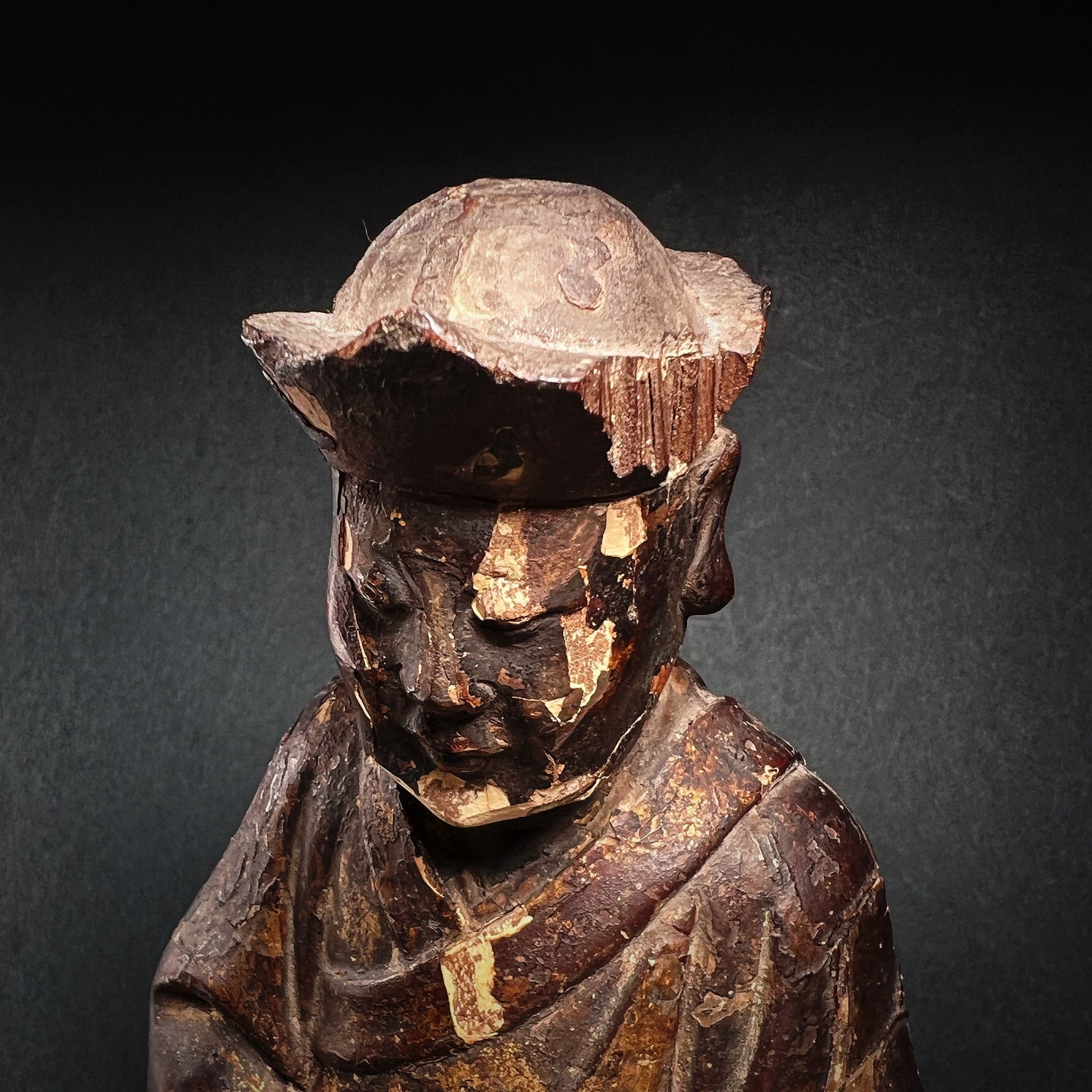

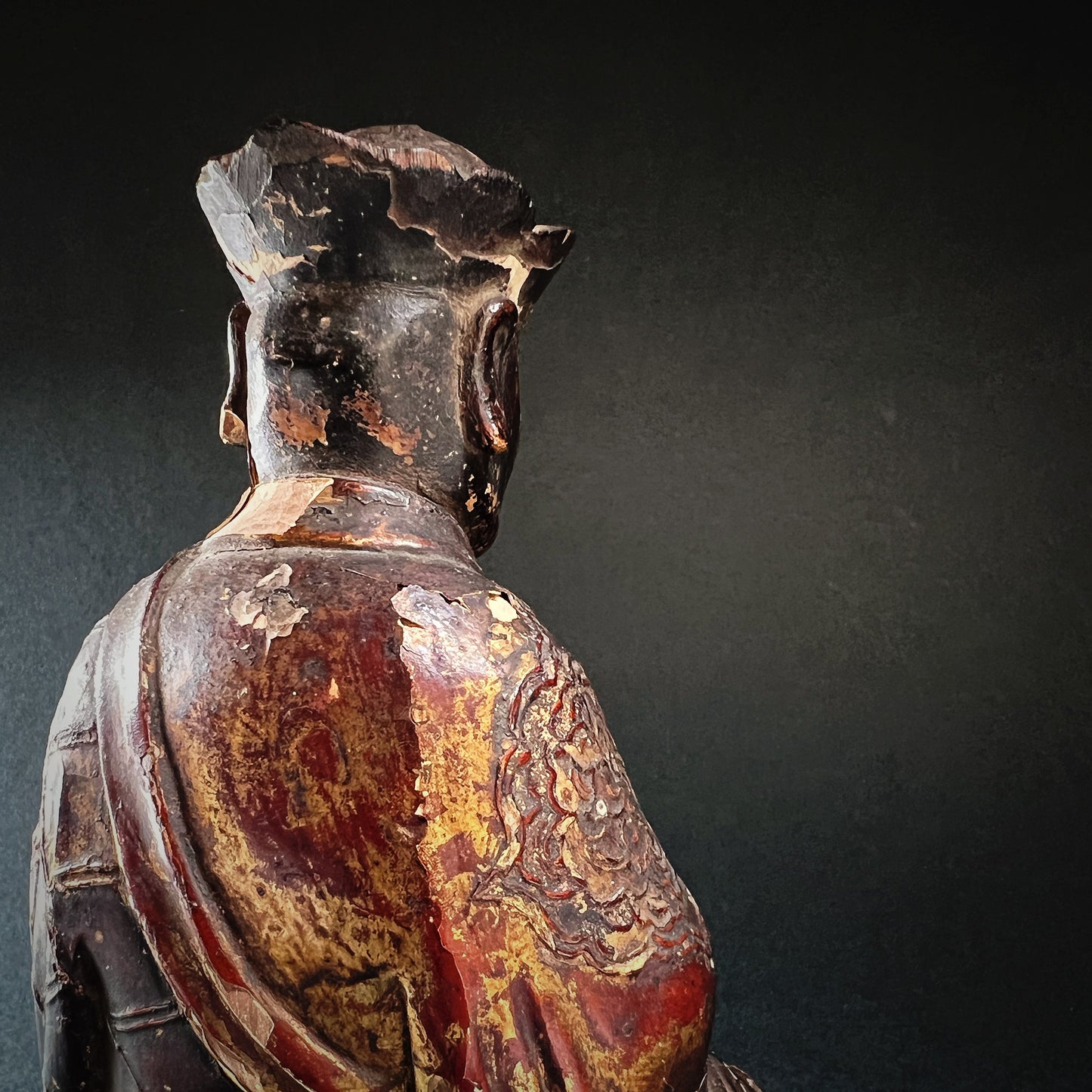
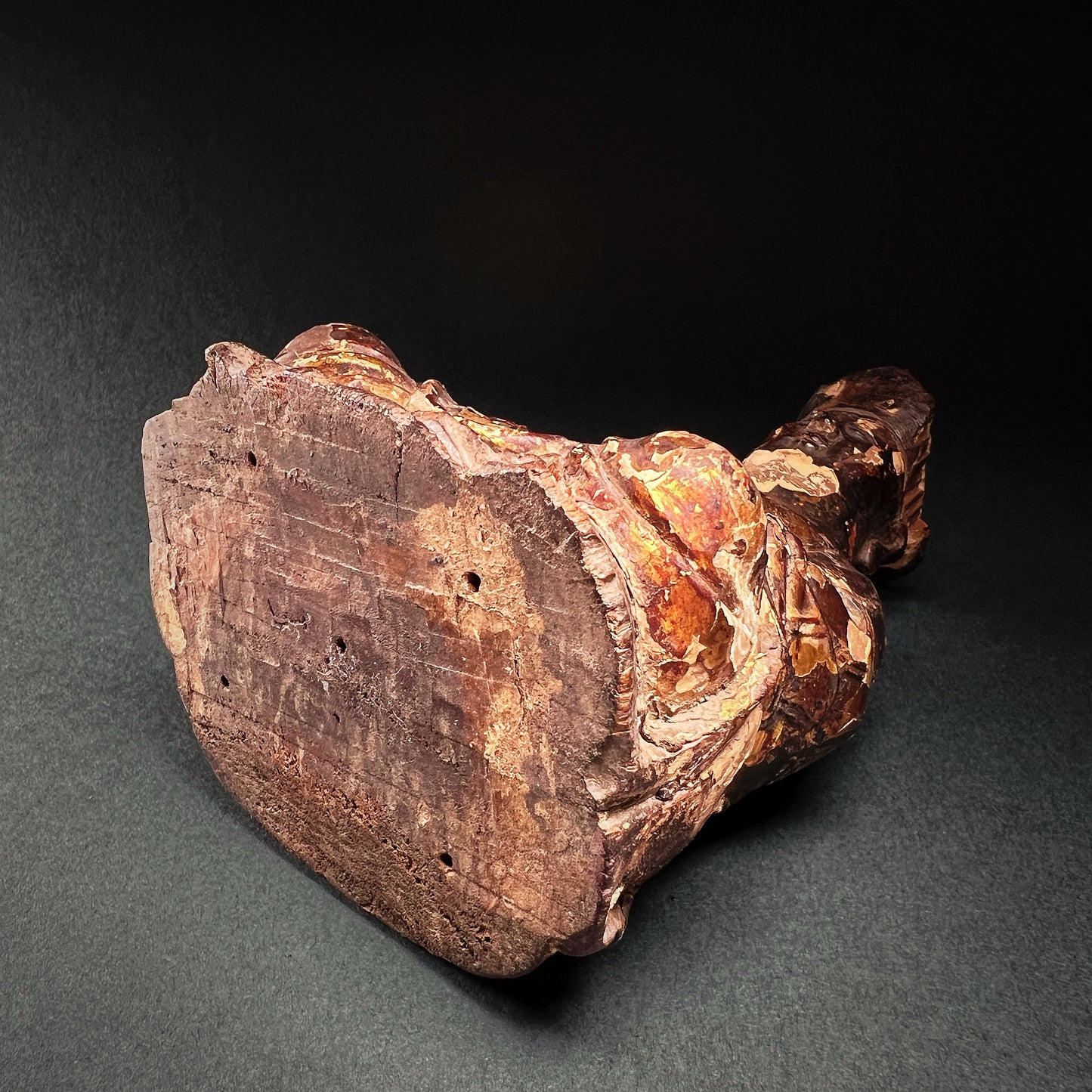
-
Shipping
The shipment will be prepared in the course of 3-5 days and dispatched via Posti Group Oyj or purchased item(s) can be picked up from our shop during the store's opening hours (Tarkk’ampujankatu 4, 00140, Helsinki, Finland). Within the Finland, all items are shipped via Posti Group Oyj unless otherwise requested. We pack the items carefully and mainly in recycled materials because we want to save nature. You will receive the tracking number for your items by e-mail.
-
Returns
Returns and exchange will be accepted within fourteen days (14) of receipt at the purchaser’s cost to include freight and packaging. Items must be returned in the same condition as when they were shipped, and will not be accepted if damaged or altered in any way. Please inform us via email (info@gotanmaailma.fi) or by calling +358408408352 before sending. We do not accept returns more than 14 days after delivery.
